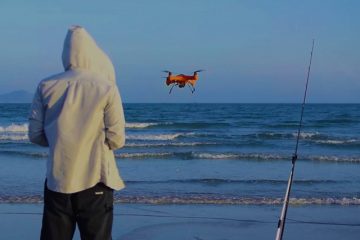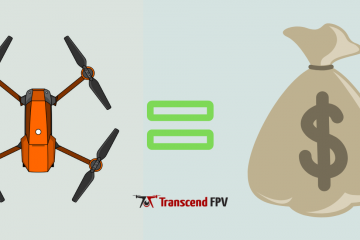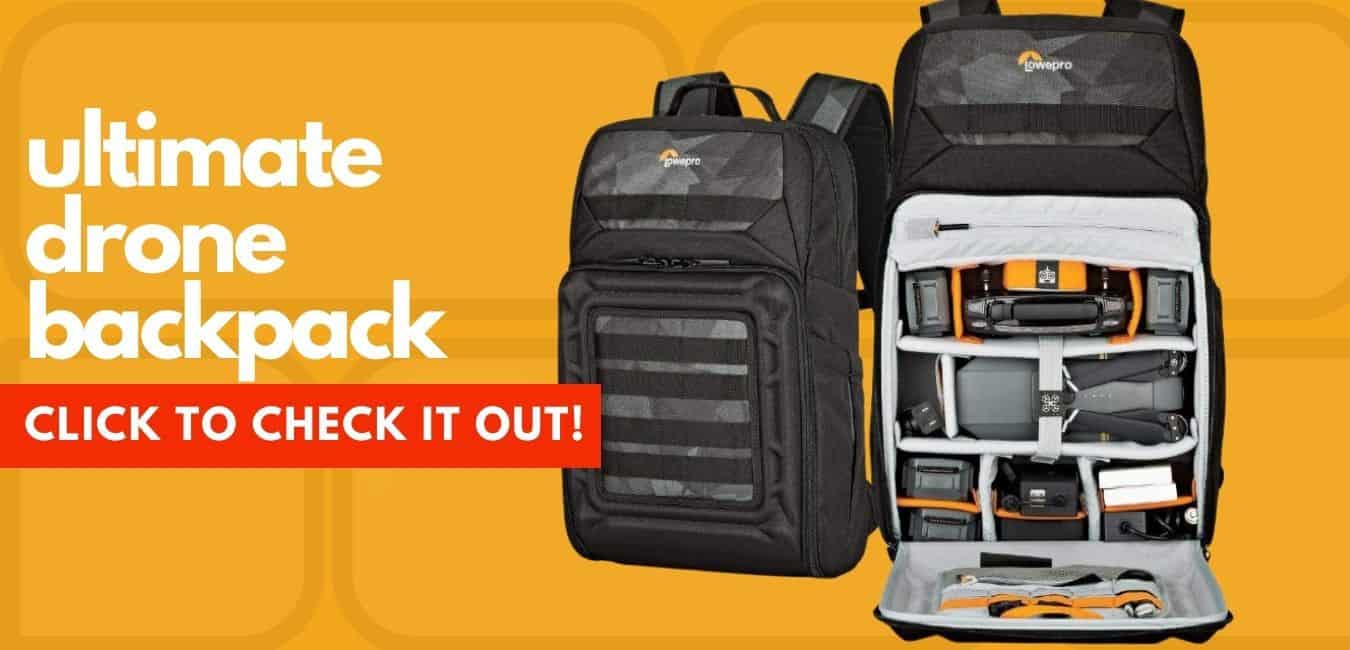Can A Drone Hover Inside A Moving Car?
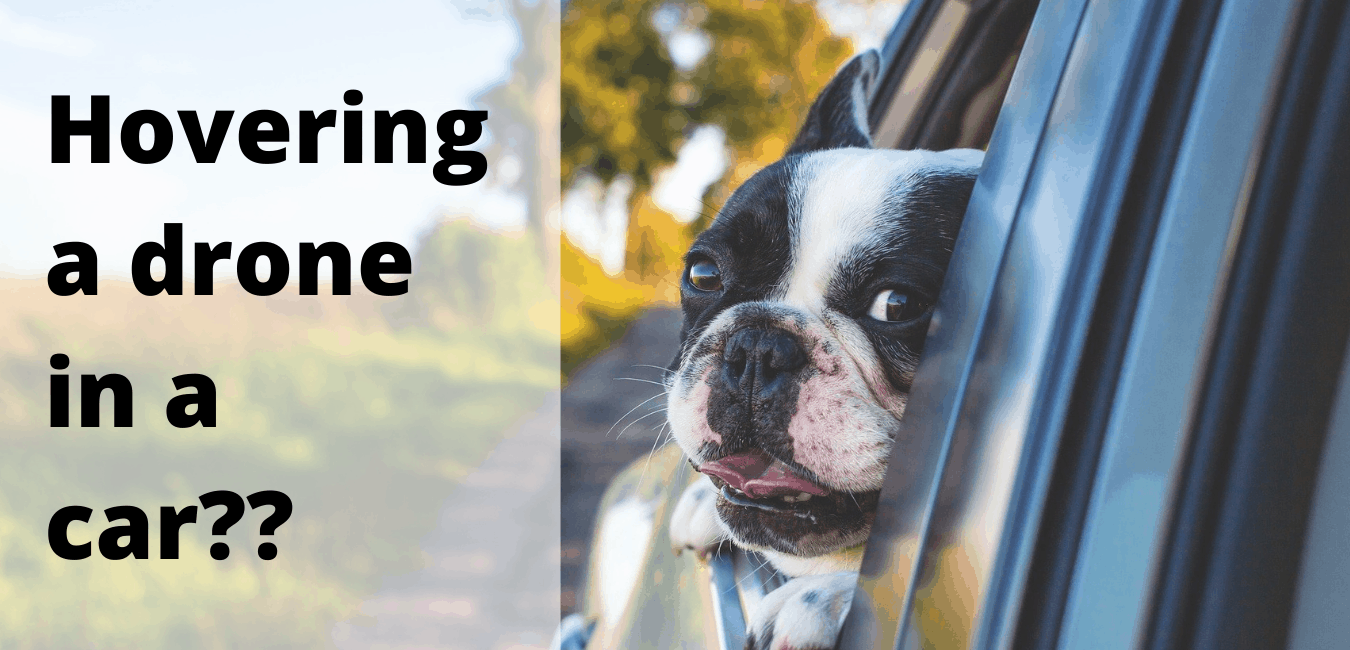
TranscendFPV is a reader supported product and review site. Clicking on links to learn more, or buy products, may earn us money, and support our work. Learn more about the history of TranscendFPV and our passion on our About page.
Whether you are new to operating drones or have been flying for years and have thousands of hours of experience behind the controller, you may have asked yourself, at some point, is it possible to fly my drone inside my car?
Thanks to the laws of physics, the answer is yes. A drone can hover inside a moving car, but it can only do so if it has sufficient space and if the interior is completely sealed and there are no external factors adding drag to the drone that could interfere with the lift its propellers generate.
To fully comprehend if this is possible and how this is possible, we need to examine how all the various elements come together to get drones in the air in the first place.
Quick Links
Is It Really Possible?
To answer this question, we can look at a few scenarios that will lead us to the truth. It should come as no surprise that the knee-jerk reaction to this question is usually, “it depends.”
The three scenarios we will examine to answer this question:
- Scenario 1 – An enclosed vehicle is moving, and the drone attempts to take off inside it.
- Scenario 2 – The drone is attempting to land inside a moving vehicle.
- Scenario 3 – Both the drone and car are stationary, the drone takes off, and the vehicle starts moving.
Scenario Number 1
The first scenario we are going to address is that the vehicle is driving, and the drone is inside. For this, we will assume that you are driving a large enough car that gives the drone ample space to move around inside without worrying about whether or not it’s going to collide with the sides of the vehicle. This scenario is only a thought experiment, so we can bend the rules just a little bit.
The car starts driving and gets up to speed. Once it’s up to 60mph, it stays at that speed indefinitely, and we have endless miles in front of us, so there is no need ever to stop or slow down.
Alright, the vehicle is now cruising at a constant speed, and your drone has been turned on. You engage the throttle, and the drone starts to lift off. What happens?

If we think back to our high school physics class, we might remember a certain physicist who formulated laws that deal specifically with objects and their motion. Sir Isaac Newton taught the world that an object will stay stationary unless it is moved and that a moving entity will continue to do so unless something stops it from moving. This is called inertia. Inertia is the battle between any item and its velocity.
Keeping this in mind, we now turn back to our vehicle. The vehicle is moving at a constant rate, as are you, the drone, and the air inside it. Because the inside of the car is completely closed off from the outside, i.e., no windows are open, no external forces are acting on the air inside the vehicle. Because there are no external forces, nothing is keeping your drone from taking off and hovering inside this enclosed space.
As long as the vehicle stays at a constant speed, your drone will happily hover in place while the car is moving. Once the car starts slowing down, the air inside the vehicle will slow down with it if done gradually enough. If the vehicle stops abruptly, the air inside will slosh around just like water inside a cup, and the drone will most likely crash.
Scenario Number 2
The car is moving, and the drone starts outside. Let’s say you are driving your van, and one of your friends are flying their drone. Would it be possible for them to land their drone in your vehicle while you’re accelerating?
If you drive your car slow enough to allow the drone to catch up, you should hypothetically be able to land your drone inside while it’s moving. The only problem with this scenario is that air behaves differently when objects are pushing through it, in this case, your car and your friend’s drone.
Vehicles are built with aerodynamics in mind. The faster a car moves, the more air it needs to push out of the way. The air your vehicle pushes over the hood and across the roof becomes very violent towards the car’s rear. If the car is driving too quickly, the air currents it generates will be too turbulent for your friend’s drone to handle, causing it to crash as soon as it comes into contact with the turbulence. Likewise, if you have the side panel open on something like a van, the air that gets pushed aside creates an invisible wall. The drone will be violently pushed against the door frame when you attempt to pass it through that wall.
If you drive slow enough, there won’t be enough turbulent air to interfere with the air your drone needs to stay airborne, and you’ll be able to land it inside the vehicle without it crashing and shattering into a million pieces.
Scenario Number 3
The last scenario we will address is what happens if I keep the rear of my car open, fire up my drone, and start driving away? Will the drone stay in place? Or will it remain inside the vehicle?
It should come as no surprise that the drone is left hoving in place when the car drives away. It is understandable if you think about it. The air inside the car doesn’t stay inside the vehicle if you leave the back open because the air isn’t brought with the car as it drives away. The drone will stay where the air is that it’s been using to remain airborne.
How And Why Drones Fly
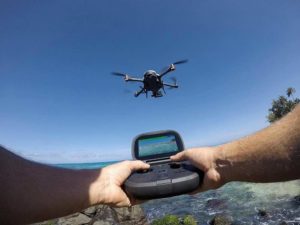
Drones achieve flight by utilizing propellers that spin at a high velocity that forces air down, generating lift. The faster the motors on a drone spin, the more lift it produces, and the slower it spins, the more gravity will pull the drone down.
As the drone tilts forward, the air the motors push down starts to shift towards the rear of the drone at an angle, allowing it to move forwards and vice versa. This shift in airflow direction is called angular momentum and is the basis the drone uses for its maneuverability.
The drone’s flight computer uses its gyroscope to calculate how much power it needs to send to each of its individual motors in order to move the drone in the desired direction. For example, when you push the stick on your controller to the left, the drone will send less power to the left motors and more power to the right motors, causing the drone to drift to the left. The same applies when you want to send your drone forward, backward, or to the right.
Is It Safe?
If you are thinking about launching your drone inside a moving vehicle, you need to understand the risks involved in doing so. Drones can be hazardous machines if operated improperly. A spinning propeller has hurt people in the past. These propellers are sharp when spinning at high speeds and can cut you if the drone crashes into you.
Don’t attempt this if you don’t have enough space inside the vehicle or if there are other passengers inside. Do not try to launch your drone if you are the one driving the car. Distracted drivers cause far more accidents than drivers who are paying attention to the road. It is incredibly unsafe to fly a drone while driving a vehicle in a populated area, drones are not designed to keep up with cars, and if you are going slow enough for the drone to keep up with it, you might cause an accident.
Is It Legal?

The FAA prohibits pilots from operating a drone from a moving vehicle, whether that vehicle is land, air, or water-borne. The only exemption to this rule is if you are flying your drone over a sparsely populated area and so long as you aren’t transporting another person’s property.
If you want to fly your drone from a moving vehicle or over the vehicle from which the drone is operated, the only option is to do it on private property when no one is around to get hurt.
Conclusion
If you wanted to know if a drone could be flown inside, launched from, or landed in a car, then the answer is yes. But before you try to do it yourself, you should ask yourself if you should try to do it despite all the risks and warnings. The popular opinion from experienced drone pilots is that it is not safe and should not be attempted by unskilled, unlicensed pilots.
